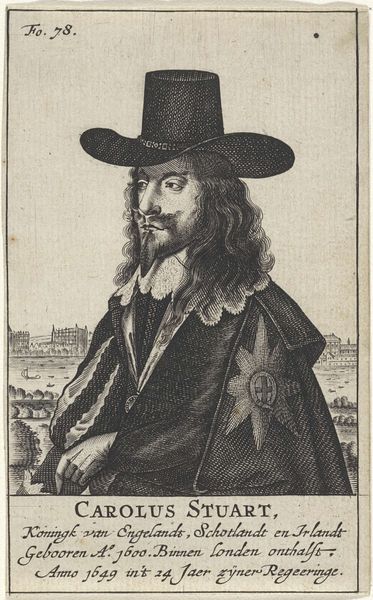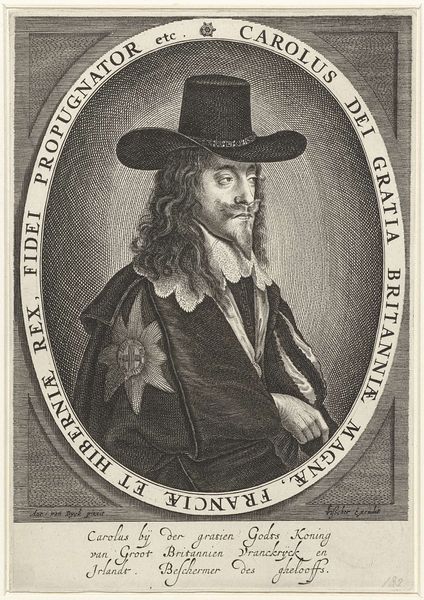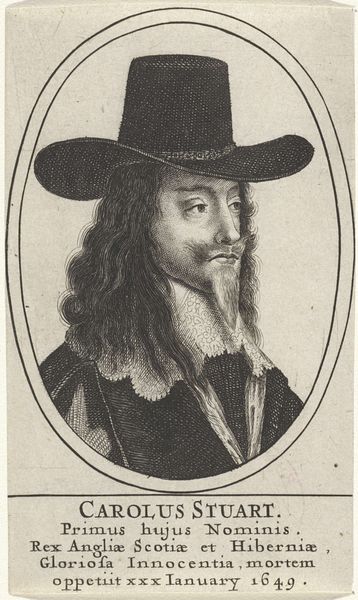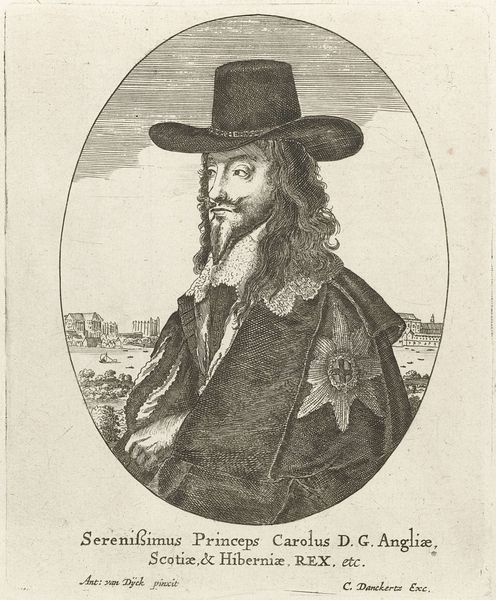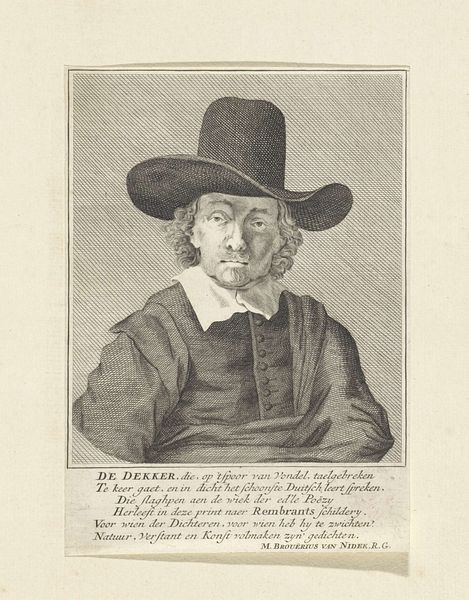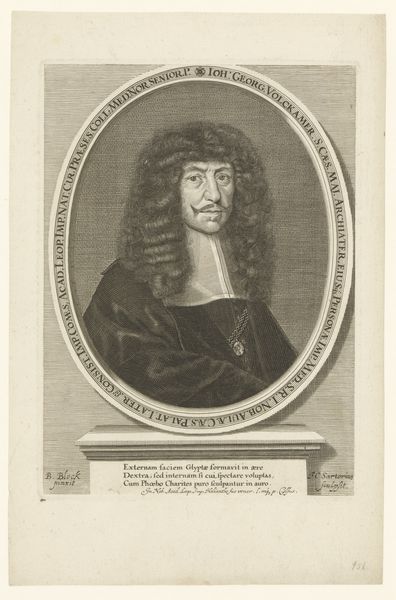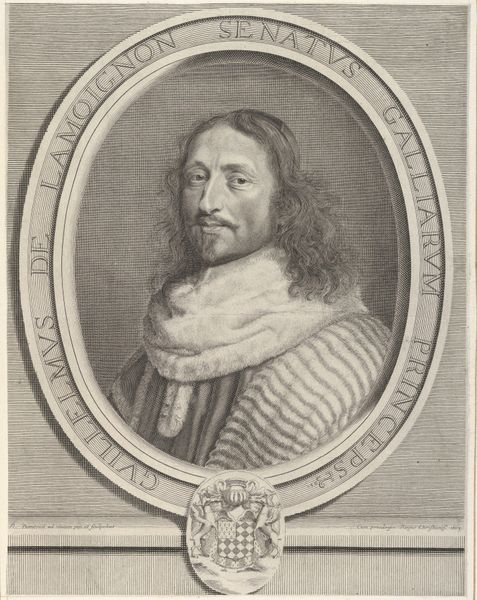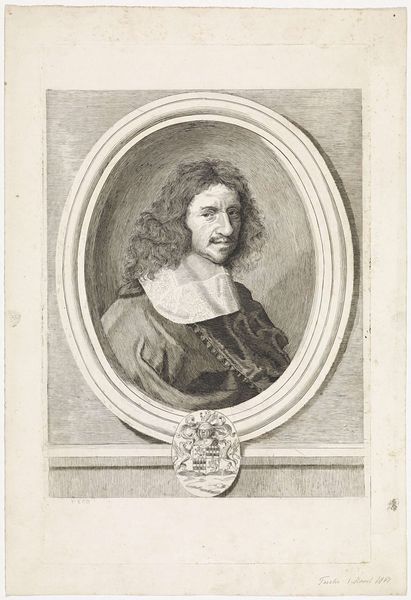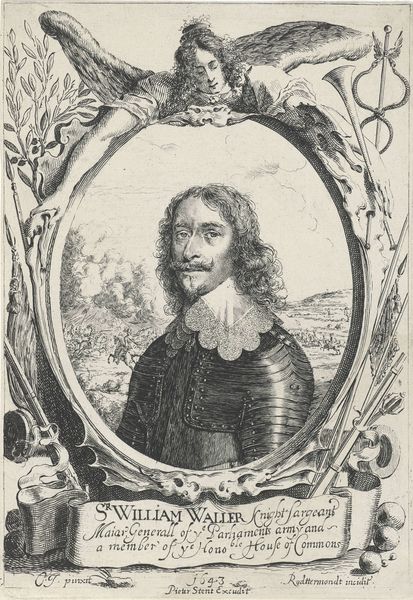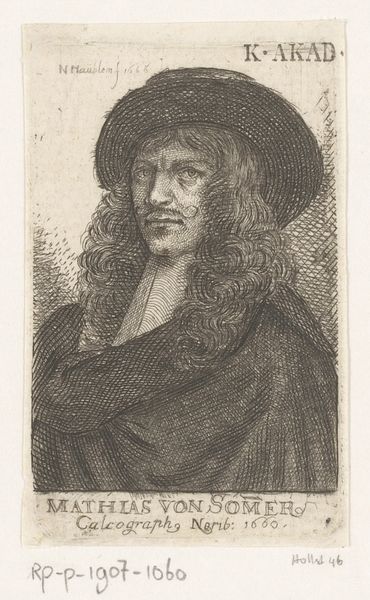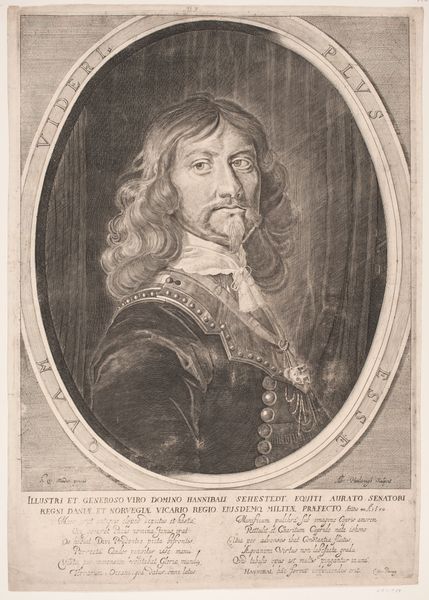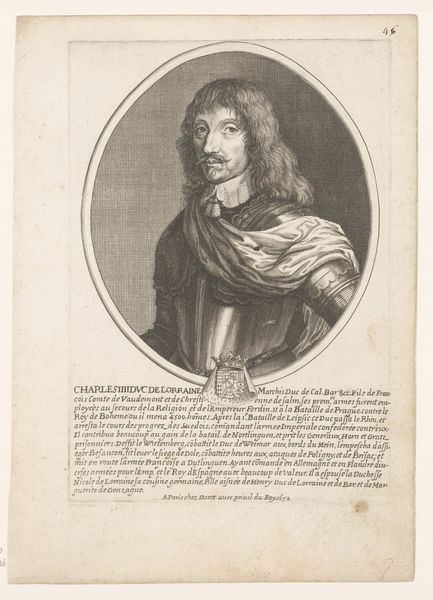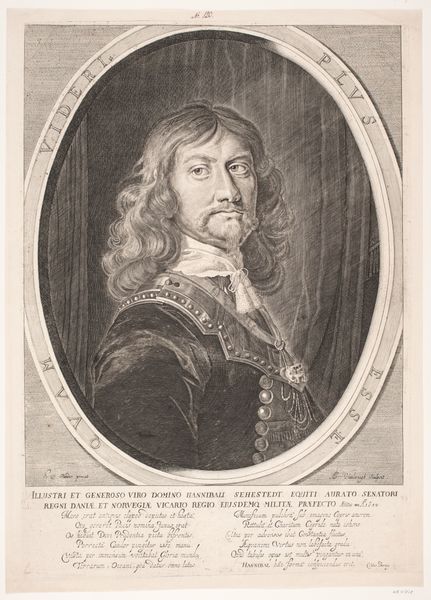
drawing, print
#
portrait
#
pencil drawn
#
drawing
#
toned paper
#
photo restoration
# print
#
pencil sketch
#
old engraving style
#
charcoal drawing
#
pencil drawing
#
old-timey
#
19th century
#
men
#
pencil work
Dimensions: Sheet: 5 13/16 × 4 1/8 in. (14.7 × 10.4 cm) cut within platemark
Copyright: Public Domain
Curator: This print, “Charles I,” created by Wenceslaus Hollar in 1649, presents a striking depiction of the King. What’s your immediate impression? Editor: It's incredibly detailed. There's something unsettling in the way the city and its people almost disappear into the distance while his piercing eyes and majestic robe become the focus. He looks so distant, perhaps even haunted. It sets a rather melancholy tone, don’t you think? Curator: Melancholy certainly resonates, particularly if you consider the context of its production. As a print, likely produced using etching techniques, copies could be circulated widely, contributing to his image cultivation – though created after his execution. Considering Hollar was a skilled craftsman, did the process influence the content itself? The tools, materials, and production constraints would be very present to both the artist and the subject, particularly at a moment of great turmoil. Editor: Precisely. Situated against the backdrop of his execution, this artwork embodies the tumultuous political atmosphere of the time. Charles is not merely a king but also a symbol of a fractured society, class struggles and resistance against autocracy. I’d venture this image became shorthand for questions surrounding divine right, legitimacy and rebellion. Curator: Absolutely. Hollar, like many artists then, relied on patronage and reproduced paintings to make a living. He wasn't necessarily offering his unique perspective on history. And so what do the materials and the choices Hollar makes in representing Charles as King actually mean at the time? In particular I'm thinking of Hollar's access to paper, printing press etc. These decisions are bound to what can materially happen at that moment. The role of art and reproduction became integral in this turbulent time in creating a "remembered" King. Editor: And looking at this today—that ripple effect remains potent, inviting viewers to reconsider power structures, historical injustices, and resistance in new, insightful ways. Curator: Indeed. Focusing on the processes of production, reproduction and material choices involved really shifts how we perceive not only artistic intent, but it brings awareness to art's historical, social, and economic contexts that shape the piece, enriching our appreciation today. Editor: Agreed. Context is always vital; allowing for conversations about power, identity, and legacy to really broaden what we consider 'art history'.
Comments
No comments
Be the first to comment and join the conversation on the ultimate creative platform.
